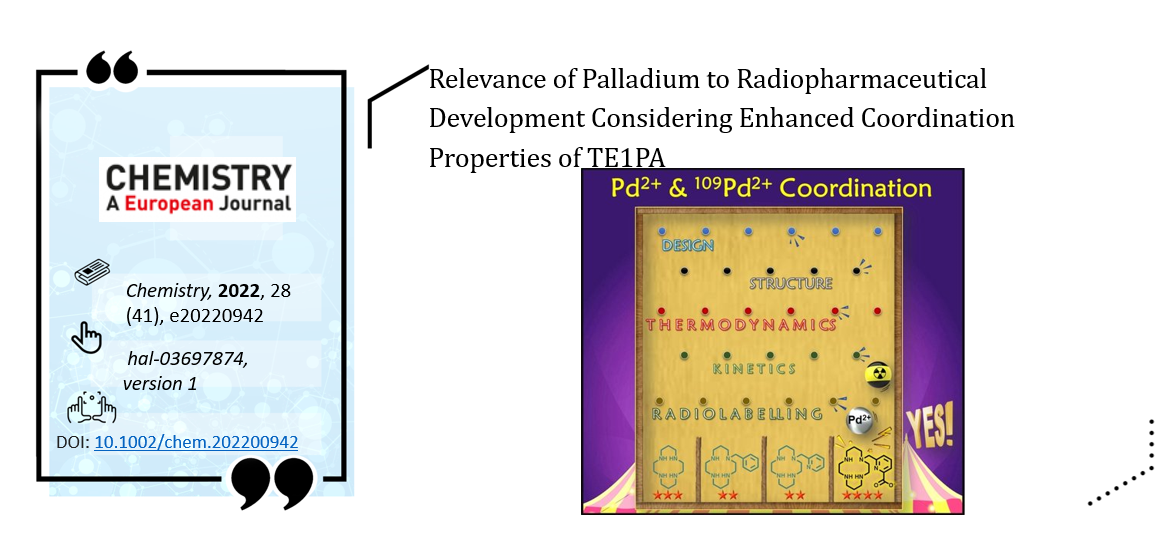
The limited use of palladium‐103 and ‐109 radionuclides for molecular radiotherapy is surely due to the lack of appropriate ligands capable of fulfilling all criteria required for application in nuclear medicine. Furthermore, the thermodynamic properties of these complexes in solution remain difficult to establish. The challenge is compounded when considering that radiolabeling of compounds for translation to clinical trials requires fast complexation. Thus, the coordination of Pd(II) and 103/109Pd‐nuclides is a huge challenge in terms of molecular design and physicochemical characterization. Herein, we report a comprehensive study highlighting TE1PA, a monopicolinate cyclam – already established in nuclear imaging with 64Cu‐PET (positron emission tomography) imaging tracers – as a highly relevant chelator for natural Pd and subsequently 109Pd‐nuclide. The structural, thermodynamic, kinetic and radiolabeling studies of Pd(II) with TE1PA, as well as the comparison of this complex with three structurally related derivatives, support palladium‐TE1PA radiopharmaceuticals as leading candidates for targeted nuclear medicine.


